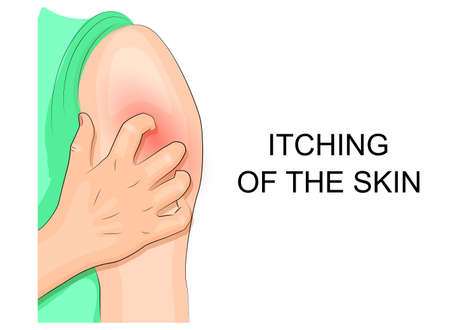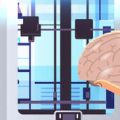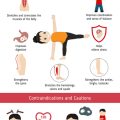Introduction to Bone Healing
Bone healing is a natural and fascinating process that helps your body repair itself after an injury like a fracture. For Americans, understanding how bones heal is important because bone injuries are common in daily life—whether from sports, accidents, or just slipping on the ice during winter. Knowing what happens inside your body can help you take better care of yourself and get back to your regular activities faster.
Why Bone Healing Matters for Americans
In the United States, millions of people suffer bone injuries every year. These injuries can affect anyone—from kids playing football to older adults who might fall at home. Getting proper treatment and allowing bones to heal correctly is crucial for regaining strength and preventing long-term problems like chronic pain or limited movement.
Common Causes of Bone Injuries in the U.S.
| Cause | Description | Who’s Most at Risk? |
|---|---|---|
| Sports Activities | High-impact sports like football, basketball, and soccer often lead to fractures. | Youth, Teens, Athletes |
| Falls | Slipping on wet floors or icy sidewalks is a leading cause of broken bones. | Older Adults, Children |
| Car Accidents | Vehicle collisions can result in serious bone injuries throughout the body. | Drivers, Passengers, Pedestrians |
| Everyday Accidents | Mishaps at home or work, like tripping over objects or dropping heavy items. | All Ages |
The Basics of How Bones Heal
Your bones are living tissue that can repair themselves after being damaged. When you break a bone, your body starts working right away to fix it. This process involves several stages where new bone forms and strengthens over time. Staying informed about these stages will help you understand why certain treatments are needed and what you can do to support your recovery.
2. Inflammatory Phase: The Body’s First Response
What Happens During the Inflammatory Phase?
When you break a bone, your body jumps into action right away. The inflammatory phase is the first stage of bone healing, and it usually starts within minutes after the injury. During this phase, your body sends special cells to the area to help protect and begin repairing the broken bone.
Typical Symptoms in the Inflammatory Phase
| Symptom | Description | What You Might Notice |
|---|---|---|
| Swelling | Fluid and white blood cells move to the injured area | Your skin may look puffy or feel tight around the break |
| Pain | Nerves react to the injury and inflammation | You’ll likely feel soreness or sharp pain, especially when moving the area |
| Redness & Warmth | Increased blood flow as your body responds to injury | The skin might appear redder and feel warm to the touch |
| Bruising | Blood vessels are damaged at the time of injury | You may see purple, blue, or yellowish marks near the fracture site |
What Can Patients Expect?
This stage typically lasts for a few days up to one week. It’s normal to have swelling, pain, and some bruising during this time. American patients often worry about these symptoms, but they are a natural part of healing. Doctors may recommend ice packs, keeping the limb elevated, and taking over-the-counter pain relievers like acetaminophen or ibuprofen (be sure to follow your doctor’s advice). Rest is important; try not to put weight on the injured area unless your healthcare provider says it’s okay.
Key Tips for Managing This Stage:
- Follow your doctor’s instructions about activity and medication.
- Keep the injured area protected—use a cast, sling, or splint as directed.
- If swelling gets worse or you notice numbness, call your healthcare provider right away.
- Avoid smoking and alcohol; these can slow down bone healing.
- Stay positive—most people in America recover well with good care in this phase!
![]()
3. Reparative Phase: Building New Bone
After your body responds to a broken bone with swelling and inflammation, it moves into the reparative phase. This is when your body gets to work rebuilding the bone. The process happens in two main steps: forming a soft callus and then a hard callus.
Soft Callus Formation
In the first few weeks after your injury, your body creates a soft, rubbery tissue called a “soft callus” around the break. This material is mostly made of collagen, which acts as a natural bridge connecting the broken bone ends. At this stage, the area around your fracture may still feel tender and weak, but this is a crucial sign that healing is underway.
Hard Callus Formation
After about 2-3 weeks, your body starts turning the soft callus into a hard callus made of new bone tissue. This hard callus is stronger and helps stabilize your bone. Over the next several weeks (usually 6-12 weeks after injury), the hard callus becomes more solid, allowing you to start using the injured limb more comfortably—always under your doctor’s guidance.
Key Milestones in Bone Healing Progress
| Milestone | What to Expect |
|---|---|
| Soft Callus Formation (1-3 weeks) | Reduced pain, swelling begins to go down, limited movement allowed if approved by doctor |
| Hard Callus Formation (3-12 weeks) | Fracture feels more stable, gradual return to daily activities, visible healing on X-rays |
How Americans Can Support Healing
During this phase, its important for patients in the U.S. to follow their healthcare provider’s advice—this might include taking part in physical therapy, eating foods rich in calcium and vitamin D, and avoiding smoking or vaping since these habits can slow down bone repair. Remember, everyone heals at their own pace depending on age, health status, and type of fracture.
4. Remodeling Phase: Restoring Bone Strength
Once your bone has passed through the earlier stages of healing, it enters the remodeling phase. This is a crucial period where your body works hard to slowly reshape and strengthen the bone so it can handle the demands of everyday American life—whether that means walking your dog, working at your job, or getting back into sports.
What Happens During Remodeling?
During this stage, the soft and hard callus that formed around your fracture site is gradually replaced by new, organized bone tissue. Your body uses special cells called osteoclasts and osteoblasts to break down old bone and build strong, healthy new bone. This process can take several months—or even up to a year—depending on your age, general health, and how severe your fracture was.
How Remodeling Affects Your Return to Normal Activities
The remodeling phase is when most patients start feeling “back to normal.” However, your bone may still be weaker than before the injury for a while. It’s important not to rush into activities that put too much stress on the healing area. Here’s what you need to know:
| Activity | When You Might Resume* | Tips for Safety |
|---|---|---|
| Daily Chores (e.g., laundry, dishes) | 4-8 weeks after injury | Start with lighter tasks; listen to your body |
| Office Work | As soon as pain allows, usually within 1-2 weeks for desk jobs | Use ergonomic supports if needed |
| Driving | After you’re off pain meds and can move safely (often 6-8 weeks) | Get your doctor’s OK first |
| Sports (running, basketball, etc.) | Usually 3-6 months after injury | Gradually increase intensity; consider physical therapy |
*These are general guidelines—always follow your healthcare providers advice.
Supporting Your Bone During Remodeling
You can help your bone regain its full strength by:
- Eating a balanced diet with plenty of calcium and vitamin D (think dairy products, leafy greens, and fortified foods common in American diets)
- Avoiding smoking and limiting alcohol—both slow down healing
- Staying active with approved exercises; walking and gentle stretching are often recommended in the U.S.
- Going to all follow-up appointments to monitor progress with X-rays or check-ups
The remodeling phase takes time but is essential for getting you back to work, play, and daily life in America with confidence. Remember, patience pays off!
5. Tips for Supporting Bone Healing
Nutrition: Fueling Your Recovery the American Way
Eating right is key to strong, speedy bone healing. Americans are familiar with the phrase “you are what you eat,” and this couldn’t be truer for your bones! Here’s a simple guide to bone-friendly foods you can easily find in your local grocery store:
| Nutrient | Why It Matters | Everyday Foods |
|---|---|---|
| Calcium | Main building block for bones | Milk, cheese, yogurt, fortified plant milks, leafy greens (like kale and collards) |
| Vitamin D | Helps your body absorb calcium | Egg yolks, salmon, fortified cereals, time in sunlight (about 10-15 mins daily) |
| Protein | Supports tissue repair and growth | Chicken, turkey, beans, tofu, peanut butter |
| Vitamin C | Aids collagen production for bone structure | Citrus fruits, strawberries, bell peppers, broccoli |
| Magnesium & Zinc | Assist in bone formation and healing | Nuts (almonds, cashews), whole grains, seeds (pumpkin, chia) |
Physical Activity: Move Safely for Stronger Bones
Staying active is part of daily life in America—think walking the dog around the neighborhood or taking the stairs at work. While healing from a bone injury, follow your doctor’s advice about when to start moving again. Here are some safe tips:
- Follow Prescribed Exercises: Physical therapists can show you gentle stretches and strength moves tailored to your injury.
- Avoid High-Impact Activities: Skip running or jumping until cleared by your healthcare provider.
- Stay Consistent: Even short walks or moving around your home help prevent stiffness and keep circulation healthy.
- Use Assistive Devices if Needed: Don’t hesitate to use crutches, walkers, or braces as recommended. They’re common tools seen in many American households during recovery!
Follow-Up Care: Partner with Your Healthcare Team
The U.S. healthcare system emphasizes regular check-ins and teamwork between patients and providers. Make sure to:
- Keep All Follow-Up Appointments: These visits let your doctor track your progress with X-rays or physical exams.
- Ask Questions: Don’t be shy—American doctors expect patients to participate in their own care. If something doesn’t feel right or you’re unsure about medications or exercises, speak up.
- Mention Any New Symptoms: Report increased pain, swelling, redness, or fever promptly—it could signal complications that need fast attention.
- Stick With Your Plan: Healing takes time. Following instructions closely can get you back to family activities, sports, and work routines sooner.
Your Everyday Checklist for Bone Healing Success
| Daily Action | Quick Reminder |
|---|---|
| Eat bone-healthy meals | Plan a balanced plate with protein & calcium-rich foods |
| Get safe movement | Do gentle activity as advised—avoid risky moves |
| Take medications/supplements as directed | Set reminders on your phone or calendar |
| Attend follow-up appointments | Add them to your digital calendar for easy tracking |
A little planning goes a long way. By focusing on nutrition, safe movement, and staying connected with your healthcare team, you’re setting yourself up for a strong recovery and better bone health in the future.


